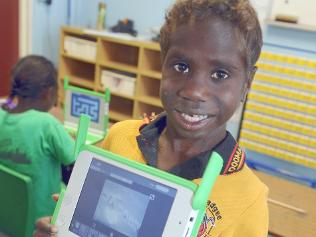The purpose of this blog post is to outline Kurt Squire's thoughts and research on the use of mobile media applications within an educational context. Kurt Squire is an Assistant Professor in Educational Communications and Technology at the University of Wisconsin-Madison in the USA. This entry focuses particularly on his research paper “Mobile media learning: multiplicities of place”(2009)
This paper offers thoughtful insight into the possibilities and the challenges of mobile media learning and the re-framing of opportunities available as an educator in terms of 'anywhere anytime' learning(Schuler, 2009). Mobile media challenges the logic of multiplicity of place in traditional education. Squire identifies three reasons that mobile media devices challenge current practices. These are;
“1. the ubiquity of mobile media devices;2. how they allow users to personalise their learning; and3. how they remediate our experiences of place. (p. 71)
A new pedagogical approach is to match the reality of a constantly connected, “always on” information rich world in which students of today inhabit.
Squire introduces the significance of mobile media platforms by quoting Yahoo Technology, 2008 when 1 million Apple iPhones were sold in the first weekend of sales, making it the fastest selling consumer devices in history. With each generation there is a convergence of tools creating new all inclusive, powerful, ubiquitous and cheaper devices. Their existing applications include; voice and text communications, image and sound manipulation, productivity tools, apps(micro programs) cloud computing and gaming applications. Although there are still some concerns with mobile devices for use in schools eg; small screens, fragility and short battery life, there are benefits in terms of portability, social interactivity, connectivity, individuality and collaboration. Instead educators should “understand how to leverage these pervasive technologies for next generation learners (Wright, 2009., p3).”
Squire argues that for schools to address and incorporate these profound changes teachers need to recognise that students come to school with their own mobile media devices in their pockets. By not recognising this situation Squire describes it as:
“it is as if the teacher’s back is forever turned on an entire classroom’s worth of activity happening beneath the radar (p79).”
which only encourages students to conceal their “always on” networking and communication activities. Instead schools should be embracing the opportunities these devices afford as frequent and intergal tools that support the curriculum.
Squire reflects on the current social practices of youth and refers to earlier works of Ito and colleagues in Okabe et al., 2005, who identify this as “cocooning” and “camping” where the former allows youth to temporarily transform their environment around them and create their own micro-space of activity in effect shutting the world around them out. “Camping” on the other hand means that you can use any physical place and bring your own media to it creating a space that is personalised to you, blurring the lines of work and play. By controlling our surroundings we are able to effectively use mobile media devices create new hybrid spaces that are both inclusive of our private and public activities.
Squire,Shuler and Sandholtz(1997) all note the benefits of using mobile one-on-one devices to encourage learning in a real world context particularly where excursions or field trips are not possible due to regulations, policy or inaccessibility. They can also be useful for teachers to individualise engaging instruction for all students within the mandated curriculum. This could be very useful in adapting work to enable students to work at their own pace or develop a special interest beyond the curriculum guidelines.
Squire is particularly interested in the use of augmented reality(AR) games and cites several of his previous works conducted in conjunction with Klopfer(2008, 2007) investigating the potential of AR games for learning in schools. These games use mobile media devices to create virtual context layers over real life places which could be used for a historical or scientific simulation. Augmented reality games support active learning by encouraging students to ask deeper questions and engage in complex forms of academic reasoning and create a situation that is about engagement, interaction, pleasure and participation.
Mainstream gaming companies have already embraced the idea of games for learning such as the very successful Nintendo’s Brain Age and My Spanish Coach which uses simple drill and practice formulas, but designed as a game, is marketed as entertainment rather than self study or learning. Another example is the Pokemon game, designed to remediate the experience of beetle collecting into a personal experience, by not only carrying their beetle collection in their pockets, but an entire universe of creatures, rules, characters and capabilities. (p75)
Whilst the entertainment, news and other information/media industries have already adapted to this mobile media reality, but as educators, who have traditionally lived in a world where our leisure time and work time don’t co-exist find it is difficult to embrace the reality of the multiplicity of these tools and their use in a constantly connected mobile media world. By using mobile devices Squire suggests educational success for all students can be achieved particularly “for those who have mentally checked out long ago (p79)”.
Squire makes valid points on the use of mobile media to create a multiplicity of place within a learning environment, however it needs to be remembered that these devices are tools which alone are not sufficient for effective learning. By using them to remediate our sense of place this will help bridge the gap between school and home that the tech-savvy youth of today crave.
References
Shuler, C. (2009). Pockets of Potential: Using mobile technologies to promote children's learning. The Joan Ganz Cooney Centre, New York
Squire, K. (2009). Mobile media learning: multiplicities of place. On the Horizon, 17(1), 70-80. Retrieved September 11, 2010, from ProQuest Education Journals. (Document ID: 1636443441).
Click to view further research and a lecture conducted by Kurt Squire on 1/20/2009; Breaking The Walls Of The Classroom Whether We Like It Or Not: Multiplicities Of Place With Mobile Media

